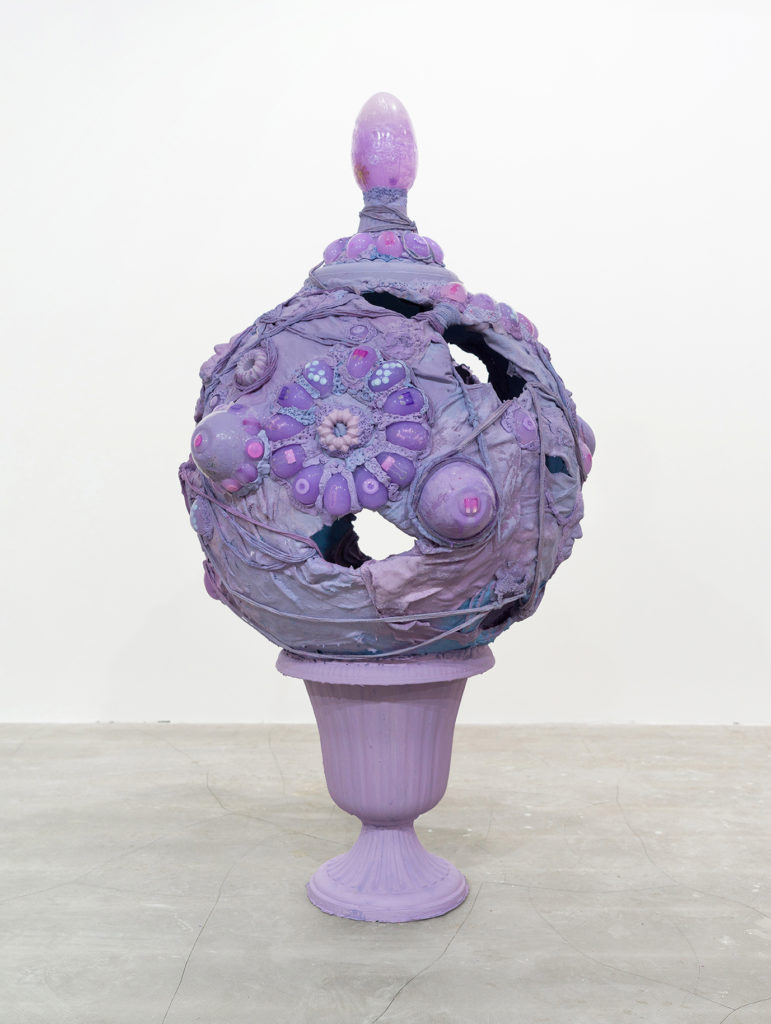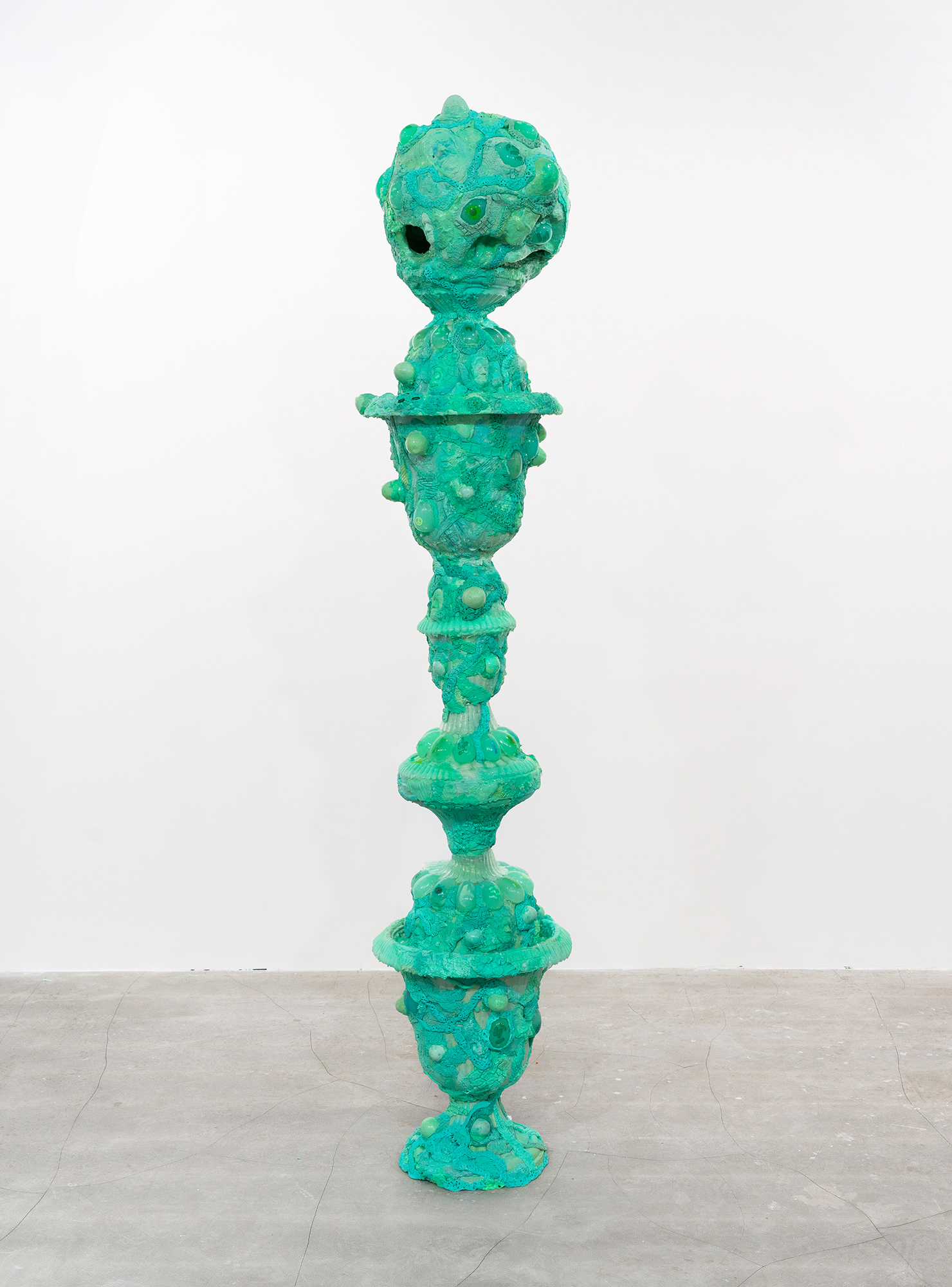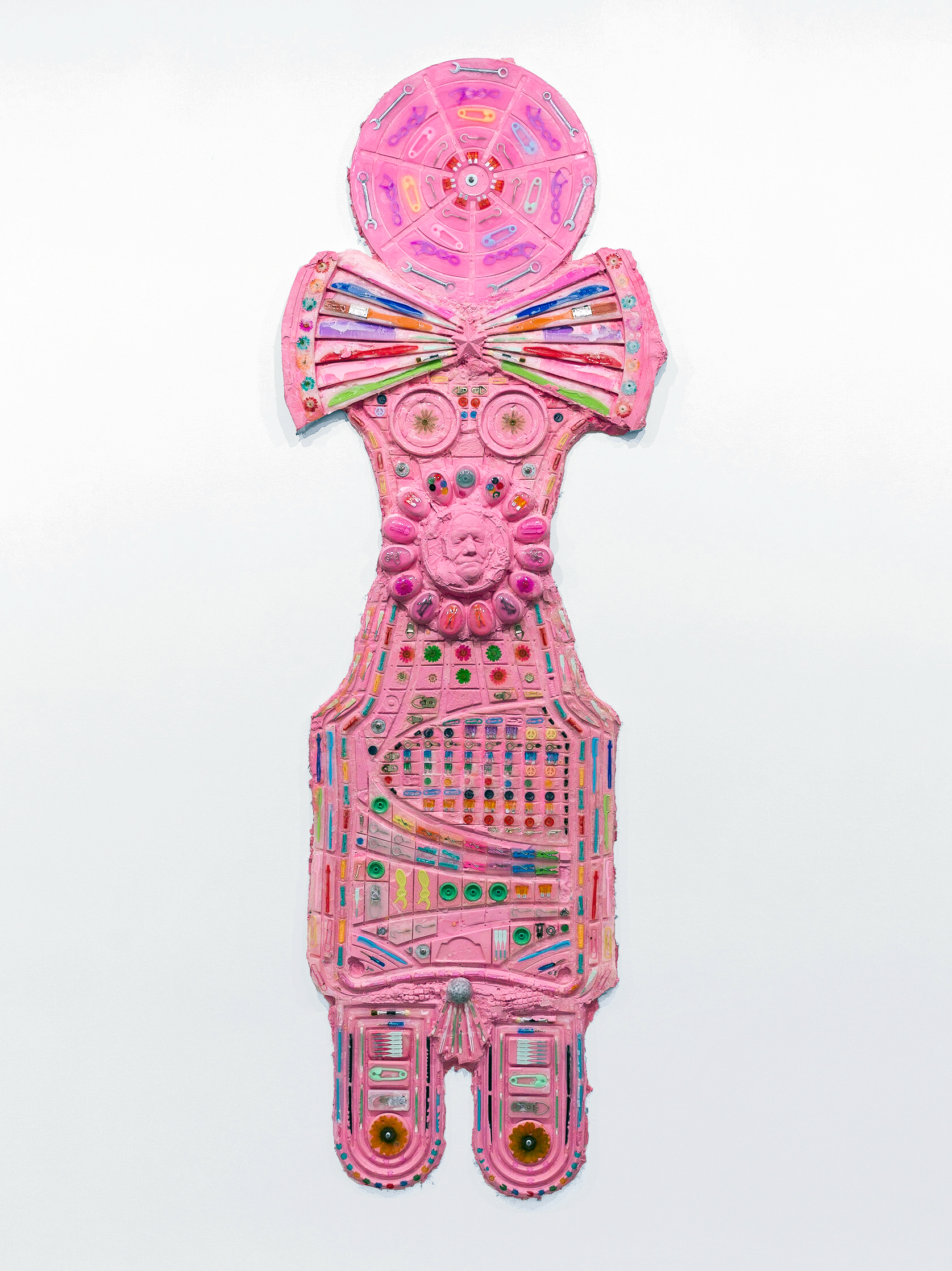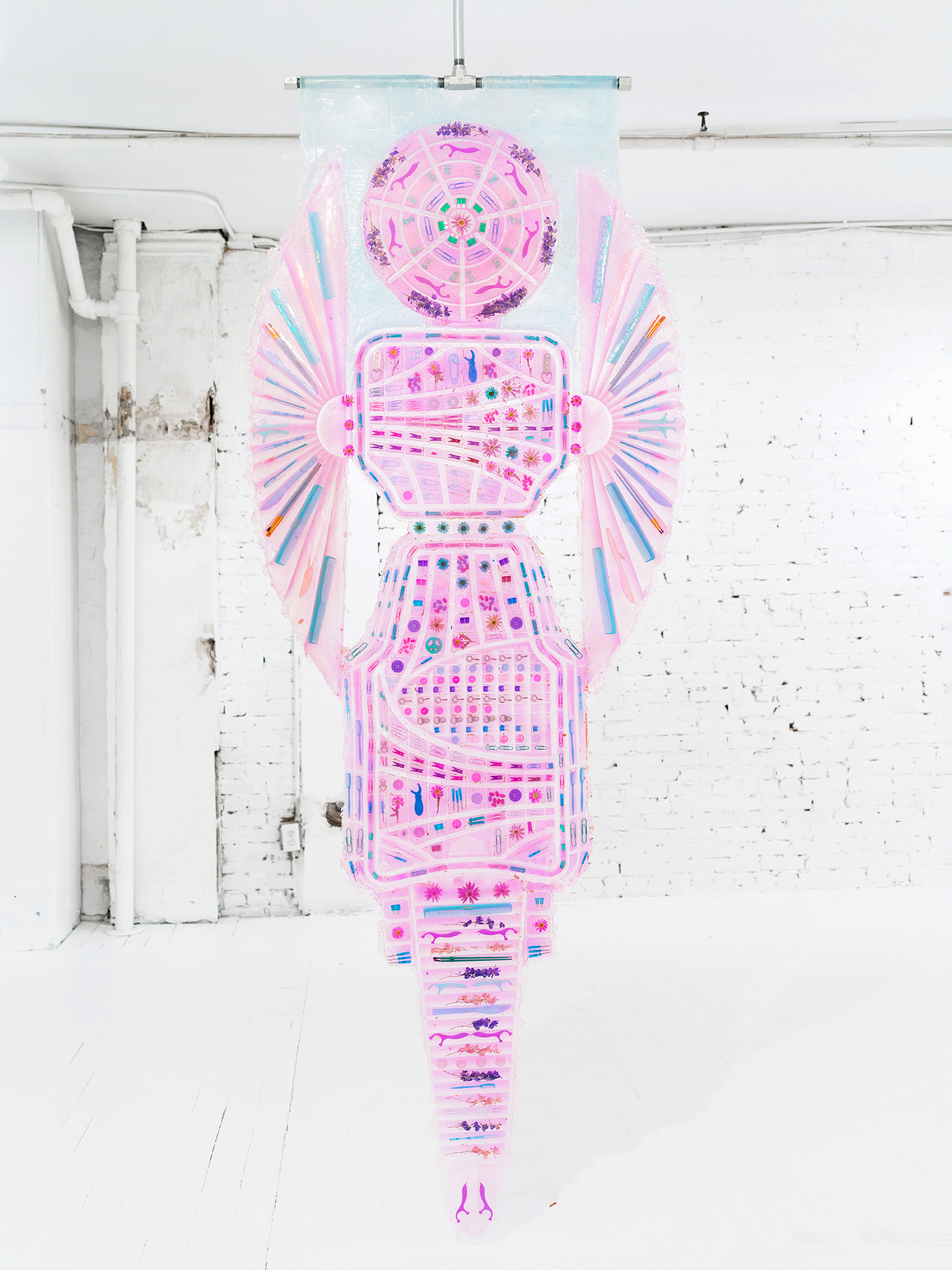
Amy Brener, a studio art professor at Hamilton College in New York, creates six-foot-tall sculptures out of discarded materials like auto fuses, buttons, tooth flossers, and safety pins. “Much of the impetus to create these specific sculptures comes from the desire to feature tiny disposable objects inside of monumental looking forms that demand reverence,” she says. In doing so, she transforms single-use commercial items into colossal works of art. Her work is now the subject of a solo exhibition at the Jack Berrett Gallery in New York City.
Brener divides her sculptures into two categories: “Omni-Kits,” which resemble ancient ornamented columns, and “Flexi-Shields,” which look like flattened battle armor for women. Resin and silicone enshrine the small knick-knacks in a hardened shell, lending each piece the air of a Sutton Hoo relic. Taken together, these forms amount to a 21st-centuring reimagining of Valhalla — if Thor and Lisa Frank sat elbow to elbow. Brener, in a nod to the ’90s visual culture of her childhood, offsets the seriousness of her work by incorporating “colors that resonate with pop cultural references,” such as hot pink, candied orange, lime green, teal blue, and royal purple. The resulting monuments ask us to pay respect to the disposable goods that keep our society stitched together. “These are highly recognizable things that I seek to defamiliarize, so that they can be appreciated anew,” she says. Several of her Omni-Kits feature a plaster cast of her deceased father’s face, which she hopes will prompt viewers to consider the “hierarchies between meaningful and throwaway objects.”




